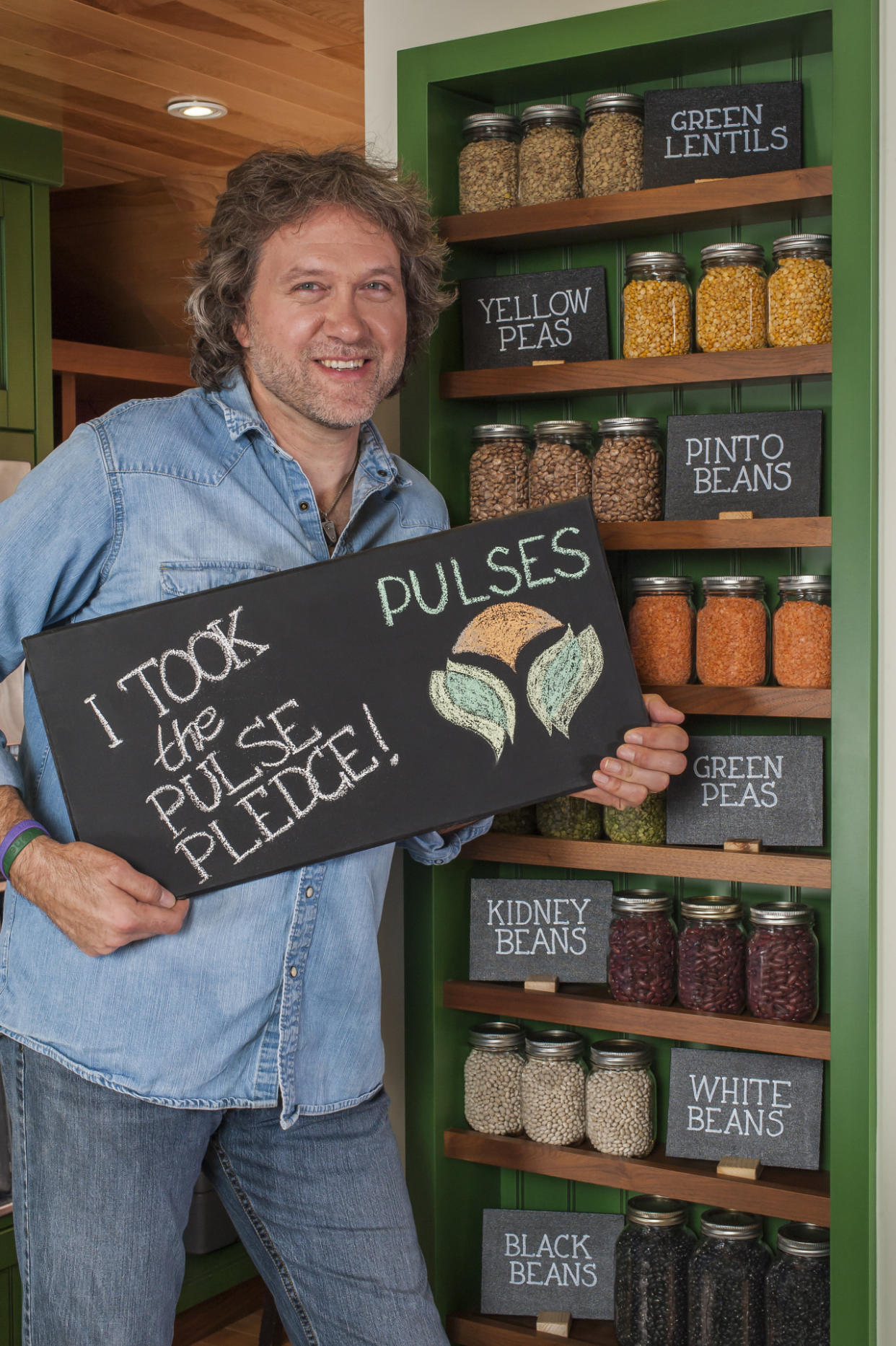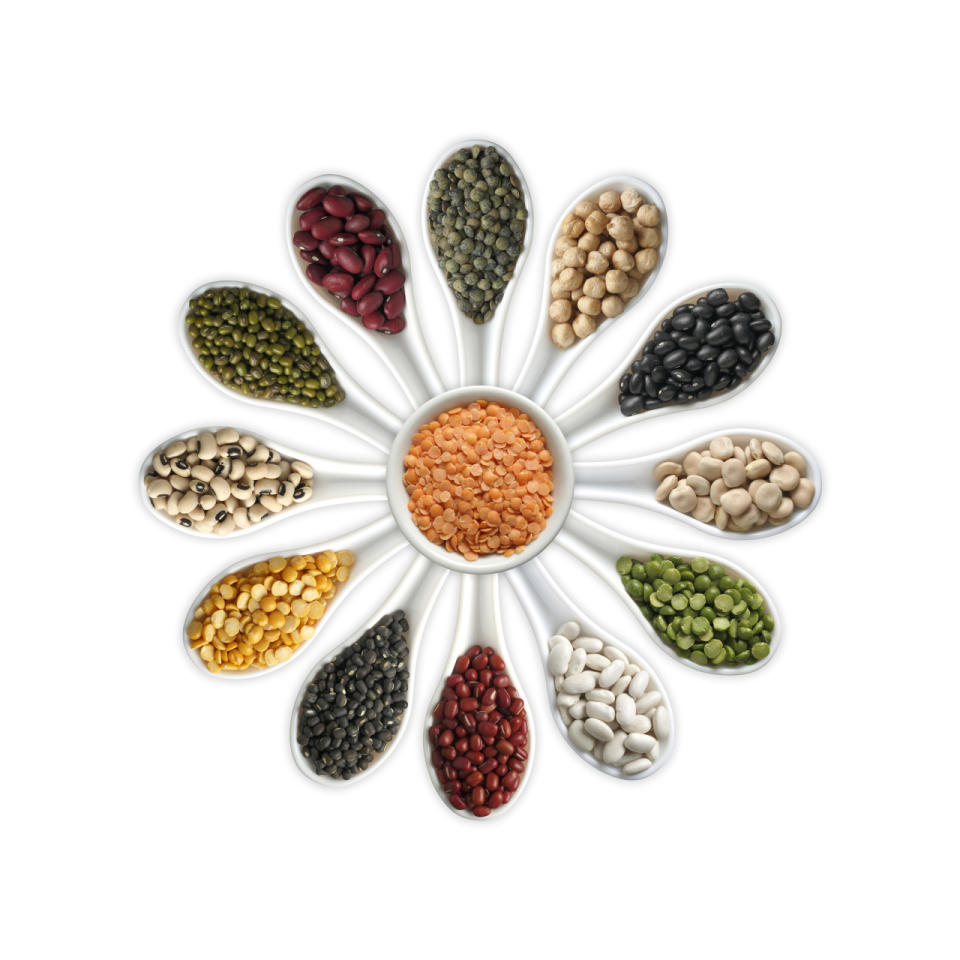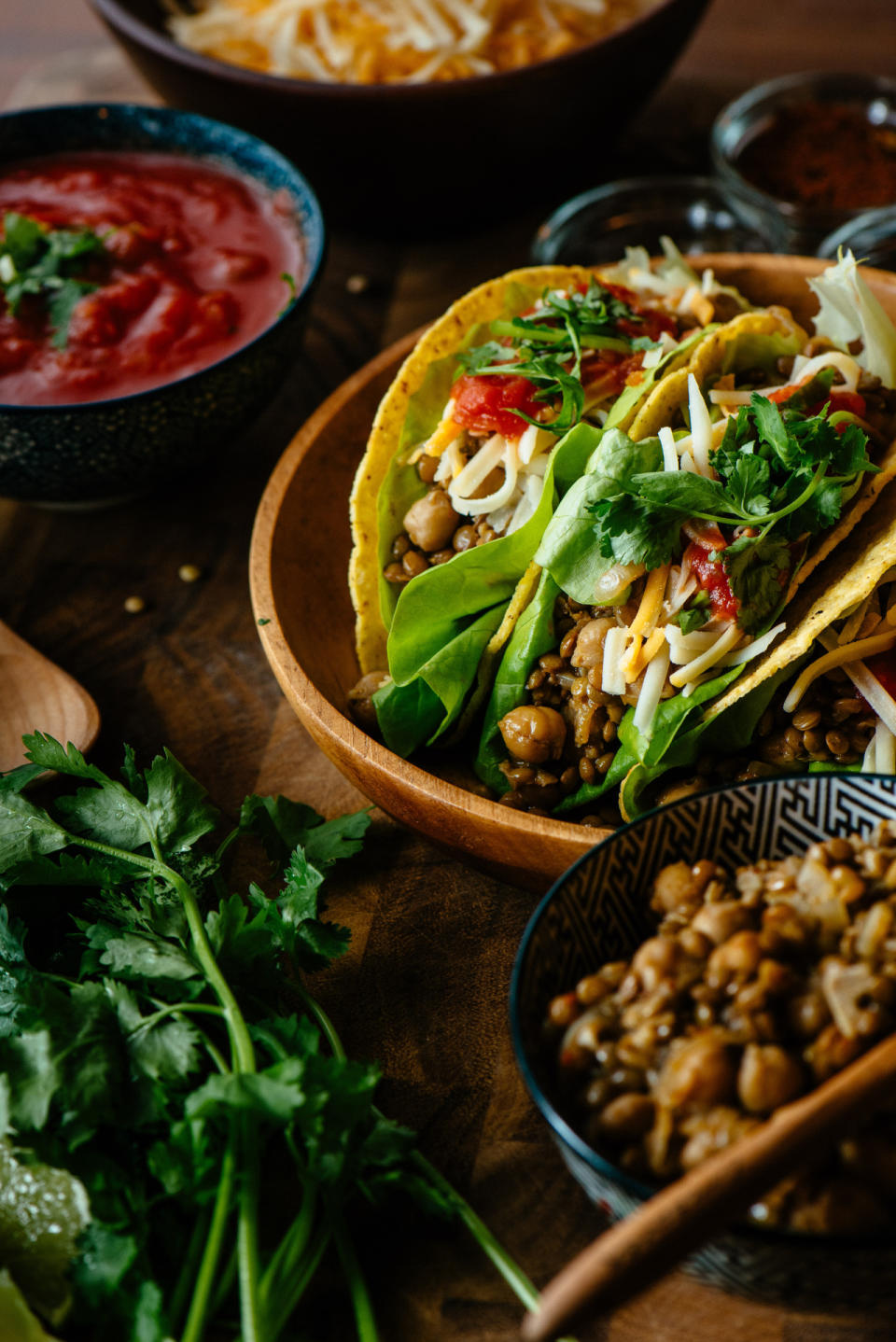Chef Michael Smith explains why you should be excited about the Year of Pulses

[Chef Michael Smith Takes Pulse Pledge / Pulse Canada]
2016 has been formally declared by the Food & Agricultural Organization (FAO) of the United Nations to be the International Year of Pulses (IYP).
While this is big news for the Canadian agricultural industry (pulses are Canada’s fifth largest crop), many Canadian consumers may not even know what a pulse is.
The word pulses refers to the edible seeds of plants in the legume family. These are commonly known as beans, peas, lentils and chickpeas.

[Colourful spoonfuls of pulses / Pulse Canada]
Pulses are not ingredients that are widely talked about and you don’t often see them gracing the covers of health magazines, but according to Chef Michael Smith, Canada’s IYP Ambassador, that’s the point.
“Pulses are a very common, bedrock ingredient. This is not about trying to make them trendy,” said Chef Smith, who is known for his cooking shows on Food Network Canada.
Pulses are integral to cuisines all over the world, but they are not as prominent in North American dishes. In light of this fact, a Pulse Pledge campaign has been launched in conjunction with the International Year of Pulses. This campaign encourages North Americans to add a half-cup of pulses to their diet weekly for a 10-week period.
For those who have never cooked pulses before, that challenge may seem daunting. However, Chef Smith says that the financial and nutritional benefits of adding pulses to your diet are worth the work.
“I think lots of us right now are clearly seeing the rise of food prices and many of us are attributing that partially to the price of meat,” said Chef Smith, who insists that he is not anti-meat and still enjoys a grilled steak from time to time. “Of course, you don’t have to eat meat or fish to get your protein. You can eat grains and legumes, and get your protein that way.”
Dried pulses, found in most grocery stores, are the most inexpensive option. However, many people avoid buying them because they assume that they must be soaked overnight before being cooked. While pulses like beans and chickpeas do need to be rehydrated, Chef Smith says that overnight soaking is not your only option.
“You can also easily do the rapid soak method, which basically means put the works in a pot, bring it to a rapid simmer, turn it off and let it sit for a hour,” says Chef Smith. Alternatively, he says canned pulses can be used when you’re short on time.
“I use [canned] all the time. I don’t soak pulses. Lentils don’t need soaking in the first place; they cook just as quickly as rice. But beans and chickpeas need that soak, so I just go for canned. Really all you have to do is rinse away that slimy stuff and know that what’s staying behind is all the nutrients and flavour.”
Some consumers may avoid cooking lentils at home because they think that their children won’t eat them. Chef Smith, who has three children of his own, says that doesn’t have to be the case. It all depends on your approach.
“The first thing parents have to do is recognize how important this is. [Healthy eating] isn’t optional. If we’re still convincing ourselves that processed food is viable, we’re still making a gigantic, crushing mistake.”
Pulses are surprisingly healthy. Not only are they a low-fat source of protein, but they are also very high in fibre. In fact, half a cup of cooked pulses provides more than one-third of the fibre needed for the entire day.
“The second thing we have to realize is that this isn’t hard. I’m well aware of the challenges of feeding kids, I get it. My kids are no different from any other when it comes to vocalizing what they will and won’t eat, and what they want to eat. It comes down to patience and persistence.”
If you know your kids won’t eat a bowl of stewed lentils or chickpeas, Chef Smith recommends introducing them in a different way.
“One dish that I have tons of success with in my family is the pulse taco recipe,” said Chef Smith. “Kids love tacos! Every time somebody says to me ‘oh, kids don’t like flavour,’ baloney! Kids will eat big flavours; they just have to have fun doing it. Tacos are fun, especially when they get to put it together themselves.”
Chef Michael Smith’s Pulse Tacos

[These delicious tacos are made with lentils and chickpeas instead of ground meat / Pulse Canada ]
Makes 12 tacos, Serves 4 to 6
For the pulse filling:
- 2 tablespoons (30 mL) of canola oil
- 2 onions, thinly sliced
- 6 garlic cloves, thinly sliced
- 1 heaping tablespoon (18 mL) of chili powder
- 1 teaspoon (5 mL) of ground cumin
- 1 cup (250 mL) of green lentils
- A 19-ounce (540 mL) can of your favourite beans or chickpeas, rinsed and drained
- 2 cups (500 mL) of water
- ½ teaspoon (2 mL) of salt
- ½ teaspoon (2 mL) of your favourite hot sauce
For the taco toppings:
- A head of Bibb or iceberg lettuce
- 12 hard taco shells
- A few handfuls of grated cheddar or taco blend cheese
- Your favourite salsa
- A large bunch of fresh cilantro
- 2 limes, cut into wedges
Make the lentil bean filling. Splash the canola oil into a large skillet or sauté pan over medium-high heat. Toss in the onions, garlic, chili powder, and cumin. Sauté until the vegetables soften and the spice flavours brighten, 3 or 4 minutes. Stir in the lentils, beans, water and salt. Bring the works to a slow, steady simmer. Cover tightly and continue slowly cooking until the lentils are tender, 35 minutes or so. Stir in the hot sauce.
Assemble the tacos. Fit a full leaf of lettuce into a hard taco shell. This will hold the fillings in when the hard shell inevitably breaks. Fill each taco with a heaping spoonful of the lentil bean filling. Pack with cheese, salsa, and cilantro. Serve with the lime wedges and share!
Canadians can take the Pulse Pledge at pulsepledge.com or visit www.pulses.org for more information about pulses.


